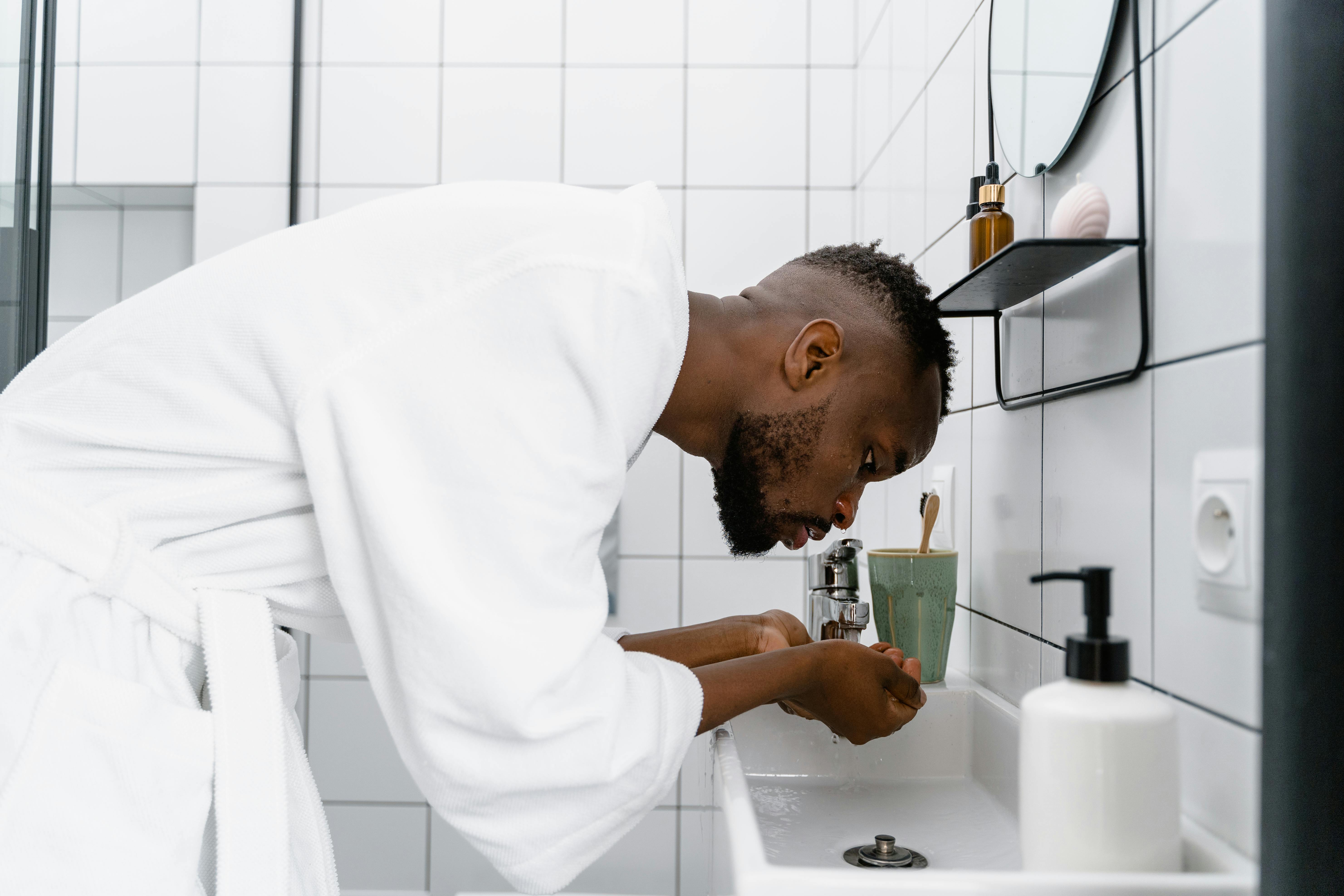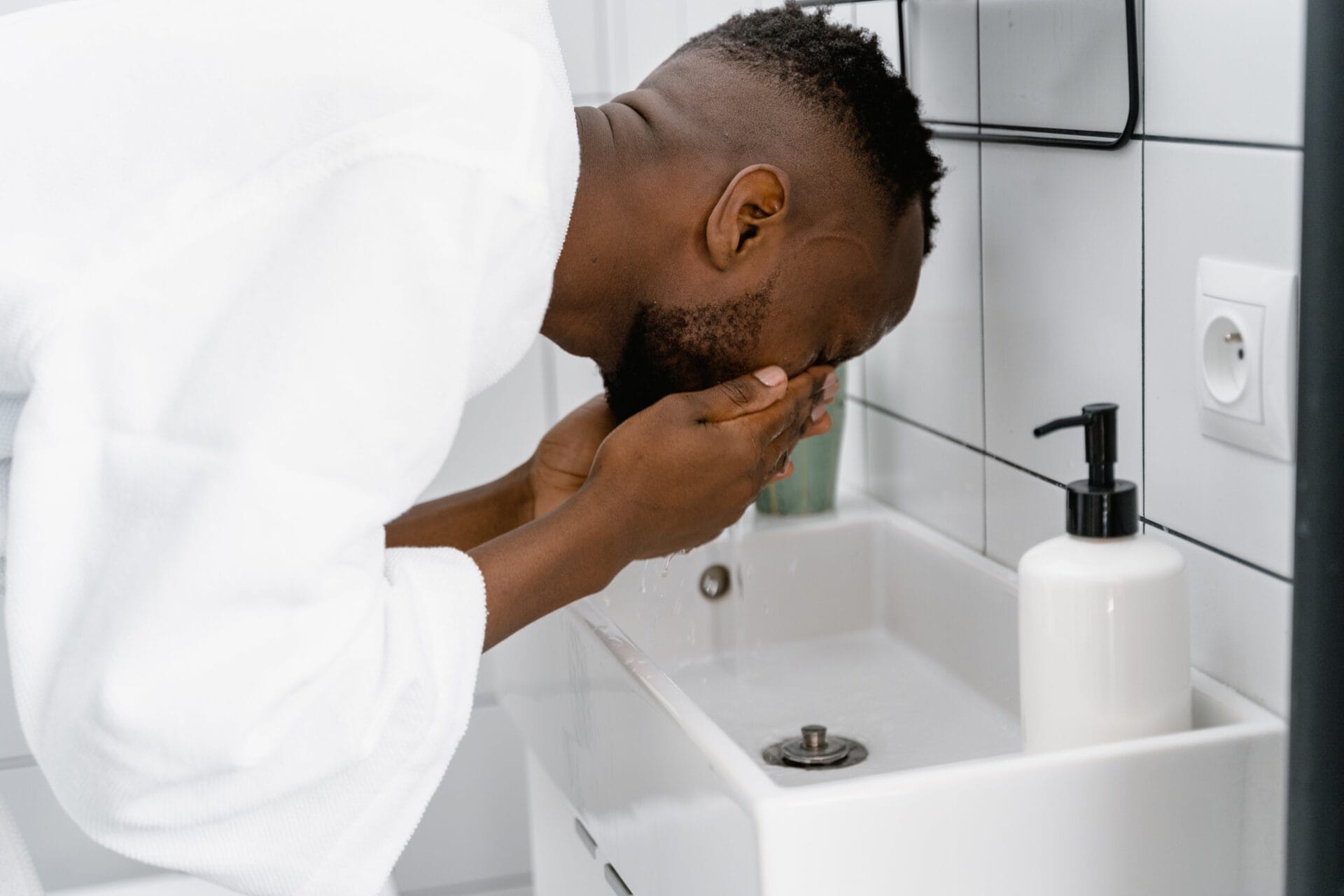Having water come up your bathroom sink can be a very frustrating experience. It can cause flooding in your bathroom and create an unpleasant mess. The source of this issue is often difficult to pinpoint and may require professional help to solve the problem. In this article, we will discuss the possible causes of water coming up your bathroom sink and provide you with tips on how to address the issue.The most common cause of water coming up the bathroom sink is a clogged drain. This can be caused by a buildup of hair, soap scum, and other debris in the pipes. It can also be caused by an obstruction in the sewer line, such as a tree root or other foreign object. If the blockage is not removed, it can cause water to back up into the sink and overflow.
Diagnosing a Blockage in the Bathroom Sink
If you are experiencing a slow draining sink, there is likely a blockage somewhere in the drain. The first step in diagnosing a blockage in the bathroom sink is to locate where the blockage is located. To do this, you will need to inspect all of the pipes and components that make up your plumbing system. Start by looking for any signs of clogs or buildup near the faucet or drain. If you cannot find any visible signs of clogs, it is likely that the blockage is further down in the pipes.
The next step is to use a plunger to try and dislodge any clogs that may be further down in your plumbing system. Make sure to cover all openings with a wet rag before attempting to use a plunger. This will help create suction on the clog and allow for more effective plunging. If you cannot get the clog out with a plunger, then it may be necessary to snake out your drain with an auger or plumbing snake tool.
If snaking does not work, then it may be necessary to remove some of your plumbing fixtures and pipes in order to gain access to the blockage and manually remove it. It is important to use caution when attempting this method as there could be sharp edges or toxins present inside of the pipes which could cause injury if handled improperly. Once you have removed any debris from your pipes, make sure to thoroughly flush out any remaining residue before reassembling your plumbing fixtures.
By following these steps, you should be able to successfully diagnose and remove any blockages that may be present in your bathroom sink. If you are still having difficulty with diagnosing or removing a blockage in your bathroom sink, it is recommended that you contact a professional plumber for assistance.
How to Unclog a Blocked Bathroom Sink
Clogged bathroom sinks can be a real nuisance. Fortunately, there are a few simple steps you can take to unclog your sink without the help of a professional plumber. In this guide, we’ll show you how to unclog and clean out your bathroom sink with some simple household items. With just a few supplies and some elbow grease, you’ll be able to get that sink running like new again in no time!
The first step is to figure out what type of blockage you have. If the water is draining slowly, that could indicate that there is an accumulation of soap scum or hair in the drain. Alternatively, if the water isn’t draining at all, then it’s likely that a foreign object such as a toy or piece of jewelry has become lodged in the plumbing. Once you’ve determined the cause of the clog, you can start working on clearing it out.
One way to clear out clogs is to use a plunger. This is an inexpensive tool that works by creating suction which helps to dislodge any blockages in the pipes. Start by making sure the plunger fits securely over the drain opening and filling up the basin with enough water so that it covers the plunger cup. Then pump vigorously until you feel resistance from whatever is causing the clog. If this doesn’t work, then try using baking soda and vinegar.
Mix equal parts baking soda and vinegar together in a bowl and pour it down your drain. The mixture will create bubbles which should help break up any blockages in your pipes. After pouring it down your drain, leave it for about an hour before rinsing it away with hot water.
If all else fails, then there are chemical cleaners available at most hardware stores which can help break up clogs in your sink drains. Simply follow the instructions on the packaging and be sure to wear gloves while handling these products as they can be hazardous if used improperly.
With these simple steps, you’ll be able to quickly unclog and clean out your bathroom sink without calling in a professional plumber!
Removing a Plug from a Bathroom Sink
Removing the plug from a bathroom sink can seem like a daunting task, but it doesn’t have to be. With the right tools and a few simple steps, you can easily remove the plug and replace it with a new one. First, you’ll need to gather the necessary tools. You’ll need an adjustable wrench, pliers, and screwdriver. Once you have these tools ready, you can begin the process of removing the plug.
Start by turning off the water supply to your sink. This is important to prevent flooding and other damage. Once you’ve done this, use the adjustable wrench to loosen the nut that holds the plug in place. This nut is usually located underneath the sink, so make sure you have access to it before proceeding. After loosening it, use your pliers to remove it completely.
Once you’ve removed the nut, use your screwdriver to unscrew any screws that are holding the plug in place. Then carefully pull out the old plug and discard it properly. Now that you’ve successfully removed your old plug, it’s time to install a new one! Place your new plug into place and secure it with screws if necessary. Finally, reattach the nut using your pliers and tighten with an adjustable wrench until secure.
And there you have it – now that you know how to remove a plug from a bathroom sink, replacing an old one should be easy peasy!
What Causes Water to Back Up in a Bathroom Sink?
Water backing up in a bathroom sink can be caused by a variety of factors. The most common causes include clogged pipes or drains, blocked vents, or an improperly installed drain pipe. Clogs are the most common cause of a sink backup and are often caused by excessive buildup of soap scum, hair, grease, and other debris in the pipes or drains. Blocked vents can also cause water to back up in the sink as it is unable to escape due to the blockage. Finally, an improperly installed drain pipe can lead to water backing up in the sink due to insufficient airflow. In addition, foreign objects such as toys or jewelry may become lodged in the pipes and cause water to back up.
If your bathroom sink is backed up with water, it is important to identify the cause before attempting any repairs. A professional plumber can help determine what is causing the problem and provide solutions for restoring proper drainage. It is also important to keep your pipes clean and regularly inspect them for signs of damage or blockages so that you can avoid future backups.

Is It Possible for Sewer Gas to Come Through the Bathroom Sink?
In some cases, it is possible for sewer gas to come through a bathroom sink. If there is an issue with the in-line venting system, the trap or the P-trap, it can cause a backup of sewer gas that can be released into the home. Additionally, if the P-trap becomes dry, this can also result in sewer gas being emitted from a bathroom sink.
It is important to note that if you notice a smell like sewer gas coming from your bathroom sink, it is important to get it addressed right away as this could be indicative of an issue with your plumbing system. If you have any questions or concerns about your plumbing system and whether or not something might be causing sewer gas to come up through your bathroom sink, it is best to contact a professional plumber who can assess the situation and provide advice on how best to proceed.
If you do decide to contact a professional plumber about potential issues with your plumbing system, they will likely inspect all aspects of your plumbing system and test for any other potential issues that could be causing an odor like sewage coming from your bathroom sink. This may include testing pipes for water tightness and checking the venting system for proper operation. Once they have identified and addressed any potential issues, they will be able to provide advice on how best to prevent this from happening in the future.
Overall, while it is rare for sewer gas to come through a bathroom sink, it is still possible if there are issues with the piping or venting systems within your home’s plumbing system. If you do detect any type of odor coming from your bathroom sink that smells like sewage, it is important to contact a professional plumber right away so that they can identify and address any potential problems before they become more serious.
Unclog Your Bathroom Sink
Bathroom sinks can become clogged up from time to time, especially if they are used frequently. Fortunately, it is possible to unclog a bathroom sink without having to hire a professional. Here are some tips on how to clear a clogged bathroom sink:
• Start by checking the trap under the sink. The trap is usually located directly below the sink and looks like a U-shaped pipe with two openings. The trap may be filled with hair and other debris that has built up over time. Remove these items by using pliers or your hands and then flush the trap with hot water.
• If the trap doesn’t seem to be clogged, you can try using a plunger to help clear the blockage. Place the plunger over the drain opening and pump vigorously several times until you see water flowing freely down the drain.
• If a plunger doesn’t work, you can try using an enzyme drain cleaner. These cleaners use enzymes to break down organic material that may be causing blockages in your pipes. Follow package instructions carefully when using this type of cleaner as some products may require multiple applications before they will be effective.
• If all else fails, you may need to remove the drainpipe from underneath the sink in order to manually remove any debris that has become lodged in it. This should only be done if you feel comfortable doing so and have access to all necessary tools and supplies.
By following these steps, you should be able to unclog your bathroom sink without having to call a plumber or pay for expensive repairs. Remember, prevention is key when it comes to keeping your sink free of clogs, so make sure that you clean out your trap regularly and avoid putting large items down your drains!
Is It Normal for Water to Gurgle When Draining From the Bathroom Sink?
Yes, it is normal for water to gurgle when draining from the bathroom sink. This is a sound that is made when air bubbles are released from the pipes as the water flows down them. As long as there is no other strange noise coming from your sink or pipes, it is likely that this gurgling sound is normal.
However, if you find that the gurgling sound is louder than usual or accompanied by other strange noises, it could be a sign of a blockage in your pipes. You should contact a plumbing professional to assess and diagnose any potential blockages in your plumbing system.
If you have recently installed a new sink in your bathroom, it could also be that air has become trapped in the new plumbing fixtures. This can cause gurgling noises as air bubbles move through the pipes and expel into the drain. This should stop after a few days as more water passes through the fixtures and pushes out any trapped air.
Gurgling noises can also be caused by poor ventilation in your bathroom, so make sure there are no drafts coming from windows or vents that could be causing this sound. If you are still unsure, you can always contact a plumber to come and inspect your plumbing system and ensure everything is running smoothly.

Conclusion
Water coming up your bathroom sink is a common yet problematic issue. It can be caused by a variety of factors, such as clogged pipes, faulty plumbing fixtures, or sewer line issues. To address this problem properly it is important to identify the source of the problem and take the appropriate steps to correct it. Professional help may be needed in some cases.
It is also important to maintain regular maintenance on your plumbing system to prevent water from coming up your bathroom sink in the future. This includes checking for any blockages in pipes and making sure all plumbing fixtures are functioning properly. If you are experiencing any issues with water coming up your bathroom sink, it is important to take action and address the issue promptly and correctly.
Taking proper action can prevent any potential damage or health hazards that may result from an ongoing problem with water coming up your bathroom sink. With the right approach, this problem can be easily remedied and you can get back to enjoying a safe and comfortable home environment.

